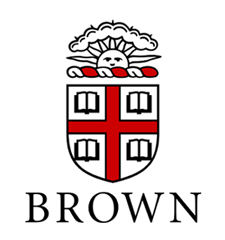Biographical note
Alfred Galpin was born on 8 November 1901 in Appleton, Wisconsin to Louisa S. and Alfred Galpin Jr. (1841-1924). While in high school, Galpin was selected by Howard P. Lovecraft (1890-1937) as the fourth vice president of the United Amateur Press Association and served two one year terms spanning 1917-1919. This initial interaction blossomed into an epistolary friendship that spanned nearly two decades. From 1918-1922, the correspondence consisted largely of the “Gallomo” round robins, so named for the participants’ surnames, Galpin, Lovecraft, and Maurice W. Moe (1882-1940) of which only seven letters survive. Galpin inspired Lovecraft to write a number of poems and an Elizabethan tragedy titled Alfredo (1918) to commemorate one of Galpin’s schoolboy crush, as well as an anti-alcohol tract on the heels of Prohibition that warned Galpin not to indulge in liquor titled Old Bugs (1919).
In July 1922, Galpin persuaded Lovecraft to visit him in Cleveland, Ohio where he was staying with Samuel Loveman (1887-1976). This would be the only time the two would meet. Lovecraft also met Hart Crane (1899-1932) and George Kirk during his Cleveland visit, yet the most productive result was Galpin introducing Lovecraft to the poetry of Clark Ashton Smith.
Galpin was one of the more educated correspondents in Lovecraft’s circle. He received his bachelor’s degree in 1923 at the University of Wisconsin-Madison. Before going on to complete two M.A. degrees; one in French at the University of Chicago in 1926 and the second in music from Northwestern University in Chicago in 1930, Galpin married Lillian M. Roche on June 23 1924. Galpin attended the Sorbonne from 1931-1932 to study music, much the dismay of Lovecraft, who had high hopes for Galpin’s literary aspirations. This devotion to music, particularly the piano, became a lifelong passion. In 1937, at the time of Lovecraft’s death, Galpin was finishing the last in a loosely connected series of four short piano pieces. He dedicated the last piece to Lovecraft and named it “Lament for H. P. L.” This composition was published in Memorabilia (1944), a collection of stories and reminiscences of Lovecraft by his friends.
In 1940, Galpin received his Ph.D. in French from the University of Wisconsin-Madison. During World War Two Galpin served as the head of the office of war information in Sardinia. After the war, he accepted an appointment in the Department of Romance Languages at the University of Wisconsin-Madison where he met Isabella Panzini, his second wife, whom he married in December of 1956.
In August of 1971, Galpin and his wife retired to the spa town Montecatini Terme in Tuscany, Italy. There, he wrote his memoir on Lovecraft titled “Memories of a Friendship,” resumed composing music, wrote letters, and attended a conference in Trieste that marked the fortieth anniversary of Lovecraft’s passing. He died on 5 March 1983 in Montecatini Terme, Italy.
- Lovecraft, H. P. and Alfred Galpin, Letters to Alfred Galpin, edited by S. T. Joshi & David E. Schultz. New York: Hippocampus Press, 2000.


